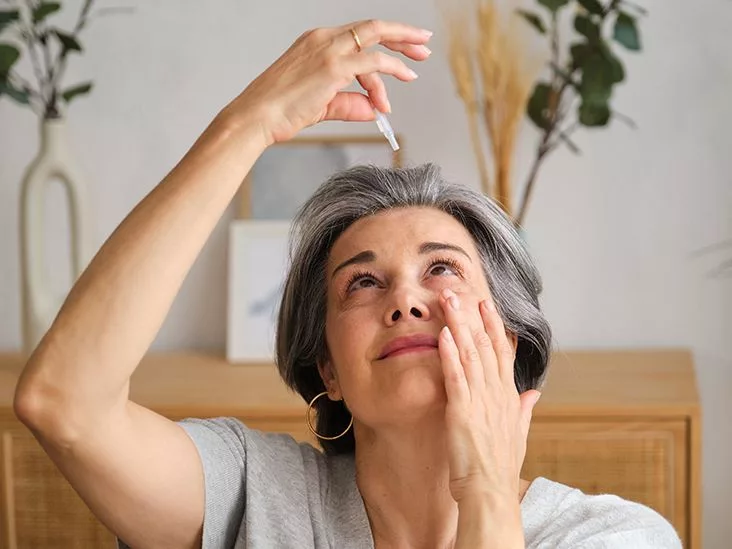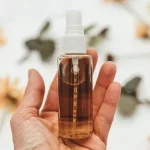Ever taken a new prescription and then felt like your eyes were “sand‑blasted” after a few days? You’re not imagining it. Some medicines really dry out the surface of our eyes, turning everyday blinking into a gritty, uncomfortable chore. In the next few minutes you’ll get the straight‑to‑the‑point rundown of which pills are the usual suspects, why they mess with your tears, and what you can actually do to feel better—without having to wade through pages of medical jargon.
Ready? Let’s dive in, because your eyes deserve a little love (and a lot of clear answers).
What Is Dry Eye?
Dry eye isn’t just “a little uncomfortable.” It’s a real, multifactorial disease where the tear film that coats the eye loses its balance. The Tear Film & Ocular Surface Society’s DEWS II definition calls it “a loss of homeostasis of the tear film, accompanied by ocular symptoms, in which tear‑film instability, hyperosmolarity, inflammation, and neurosensory abnormalities play a role.” The role of medications in causing dry eye explains that when this balance is tipped, you get that gritty, burning sensation we all hate.
Why Call It “Medication‑Induced”?
The term simply tells you the trigger. “Dry eye” can arise from aging, environmental factors, or autoimmune disease. When a drug is the culprit, we label it “medication‑induced” to highlight that the eye symptoms are a side effect—not a separate condition.
Who Is Affected?
Anyone can develop medication‑induced dry eyes, but certain groups are more prone:
- Older adults – poly‑pharmacy (taking multiple meds) is common, and tear‑film stability naturally declines with age.
- Women – hormonal fluctuations can amplify dryness, especially when combined with certain birth‑control pills.
- People with chronic conditions – diabetes, rheumatoid arthritis, or thyroid issues already put stress on ocular surface health.
A 2020 study of aged‑care residents found a clear link between systemic drugs and dry‑eye complaints, underscoring how prevalent the problem is in seniors Dry eyes, ocular lubricants, and use of systemic medications.
Common Culprits
Below is the “cheat sheet” of meds that frequently turn your eyes into a desert. We’ll break them down by class, give a quick note on how often they cause dryness, and why they do it.
Antidepressants & Mood‑Stabilizers
SSRIs, SNRIs, and especially older tricyclic antidepressants (TCAs) can blunt the neural signals that tell your lacrimal glands to produce tears. Even some “modern” SSRIs have been reported to cause dry eye symptoms.
Antidepressant Dry‑Eye Risk Table
| Drug | Class | Incidence % | Mechanism |
|---|---|---|---|
| Fluoxetine | SSRI | ≈10 | Serotonin pathway interference |
| Amitriptyline | TCA | ≈25 | Anticholinergic effect on lacrimal glands |
| Venlafaxine | SNRI | ≈12 | Reduced parasympathetic tone |
Blood‑Pressure & Cardiovascular Meds
Beta‑blockers, diuretics, and even some ACE inhibitors can lower aqueous tear production or affect the autonomic nerves that regulate the ocular surface.
Blood‑Pressure Dry‑Eye Risk Table
| Drug | Class | Incidence % | Mechanism |
|---|---|---|---|
| Propranolol | Beta‑blocker | ≈18 | Decreased sympathetic stimulation of lacrimal glands |
| Hydrochlorothiazide | Diuretic | ≈14 | Systemic dehydration → reduced tear volume |
| Lisinopril | ACE inhibitor | ≈8 | Altered ocular surface inflammation |
Antihistamines & Decongestants
These are the classic “dry‑eye meds” you see on OTC shelves. Their anticholinergic action dries out the eyes just as it does your mouth.
Acne Medications (Isotretinoin)
Isotretinoin shrinks sebaceous glands throughout the body, including the Meibomian glands that supply the oily layer of your tear film. Less oil means faster evaporation and a sand‑like feeling.
Other Notable Triggers
Anticholinergics used for asthma or overactive bladder, Parkinson’s disease drugs, certain sleeping pills, hormonal contraceptives, and even regular NSAIDs like ibuprofen have been linked to dryness, according to a Review of Optometry article that cataloged over 20 % of top‑selling systemic drugs with dry‑eye potential.
How It Happens
Understanding the “why” helps you make smarter choices with your doctor. Medications can hit the tear system in three main ways:
Reduced Aqueous Production
Some drugs blunt the parasympathetic nerves that tell the lacrimal gland to secrete the watery component. Less water = thinner tear film.
Meibomian‑Gland Lipid Suppression
Isotretinoin is the poster child: it shrinks those oil‑producing glands, stripping away the protective lipid layer that slows evaporation.
Neuro‑Sensory Interference
Antidepressants, β‑blockers, and anticholinergics can dampen the sensory feedback loop that normally triggers blinking and tear reflexes. The result? A dry surface that feels irritated even when you’re not actually blinking enough.
Spotting Symptoms Early
Catch it before it spirals. Common signs include:
- A burning or gritty sensation—like tiny sand grains in your eye.
- Redness, especially around the white of the eye.
- Blurred vision that clears after a few blinks.
- Increased sensitivity to light (photophobia).
- Worsening of symptoms after starting a new medication.
Imagine Sarah, a 38‑year‑old who started an SSRI for anxiety. Within three weeks she noticed a “scratchy” feeling that got worse after her evening TV binge. A quick chat with her ophthalmologist revealed the link, and a simple switch to a different antidepressant eased her discomfort dramatically.
Getting a Proper Diagnosis
Self‑diagnosing can be tricky, but a solid medication review is the cornerstone:
Medication‑Review Checklist
Ask your doctor to walk through every prescription, OTC drug, and supplement. Highlight any that appear on the tables above, especially if you’re on multiple “dry‑eye meds.”
Clinical Tests You Might See
- Schirmer test – tiny strips of paper measure tear production.
- Tear‑break‑up time (TBUT) – a fluorescein dye shows how quickly the tear film destabilizes.
- Meibography – imaging of the Meibomian glands to spot blockages.
When to See a Specialist
If your primary care provider suspects a drug side effect but isn’t comfortable managing ocular surface disease, a referral to an optometrist or ophthalmologist is the next step. They can confirm the diagnosis and suggest targeted treatment.
Treatment & Relief Strategies
Now for the good news: most medication‑induced dry eyes can be tamed, often without abandoning the drug that’s helping you in other ways.
Topical Lubricants & Artificial Tears
Look for preservative‑free drops that mimic the natural tear composition. Hyaluronic‑acid based formulas tend to stay on the surface longer, giving you relief for 4‑6 hours.
Prescription Drops
Cyclosporine (Restasis) and lifitegrast (Xiidra) work by reducing ocular surface inflammation, which often accompanies medication‑induced dryness.
Lifestyle Tweaks
- Use a humidifier, especially in dry climates or during winter heating.
- Take regular screen breaks – the 20‑20‑20 rule (every 20 minutes, look at something 20 feet away for 20 seconds) reduces blink suppression.
- Consider omega‑3 supplements; they may improve Meibomian gland function.
Medication Adjustments
The safest route is a conversation with your prescribing physician. You might:
- Switch to a drug with a lower dry‑eye profile (e.g., from a TCA to an SSRI with a better ocular side‑effect record).
- Reduce the dose, if medically appropriate.
- Add a protective eye‑drop regimen when starting a high‑risk medication.
Here’s a sample script you could use: “I’ve noticed my eyes feel gritty since starting this medication. Are there alternative options or supportive eye‑care measures we could consider?” It shows you’re proactive without demanding an abrupt stop.
When To Seek Professional Help
Most dryness can be managed, but watch out for red‑flag signs that merit urgent attention:
- Sudden vision loss or severe eye pain.
- Persistent redness that doesn’t improve with lubricants.
- Signs of infection (pus, intense swelling).
- Extreme photophobia that interferes with daily activities.
If any of these appear, schedule an eye‑emergency appointment or head straight to urgent care. According to the American Academy of Ophthalmology, prompt treatment can prevent long‑term damage what is dry eye.
Putting It All Together
Medication‑induced dry eyes sit at the crossroads of necessary treatment and unwanted side effects. The key takeaways?
- Know the culprits. Antidepressants, blood‑pressure meds, antihistamines, isotretinoin, and many others can dry out your eyes.
- Listen to your eyes. Early symptoms—grittiness, burning, blurry vision—are clues that something’s off.
- Get a thorough review. A medication checklist and basic eye tests can pinpoint the problem.
- Treat wisely. Artificial tears, prescription drops, lifestyle tweaks, and—when possible—medication adjustments can bring relief.
- Don’t ignore red flags. Sudden pain or vision loss deserves urgent care.
Remember, you don’t have to suffer in silence. Your eye health is an essential part of overall wellbeing, and most providers are eager to help you find a balance between the medicines you need and the comfort you deserve.
Have you ever experienced dry eyes after starting a new medication? Share your story in the comments—you might help someone else feel less alone. And if you have any lingering questions, feel free to ask. Your eyes (and your curiosity) are welcome here!


















Leave a Reply
You must be logged in to post a comment.